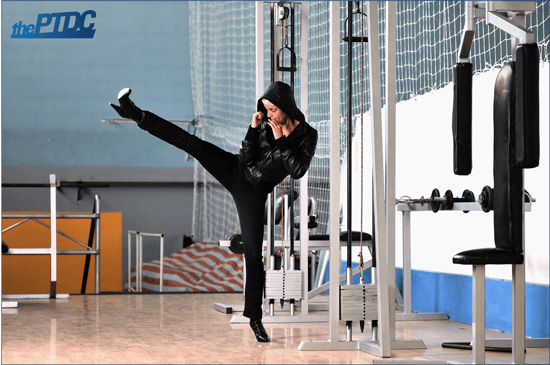MOST TRAINERS GET TWO TYPES OF CLIENTS.
One is the smart beginner who realizes he/she should start off on the right foot with some professional help. The second is the frustrated intermediate, who enjoyed the fast, easy beginner gains but has hit a plateau far from his/her goal and seeks your expertise to go to the next level.
However, there is a third type of client who also can benefit greatly from your coaching - the advanced training client. Here's how you can best serve them.
1. Understand the 2 huge challenges advanced training clients face
Challenge # 1: creating sufficient overload
Overload is easy to create with beginners unfamiliar with training. However, it can be a real challenge for advanced clients much closer to their genetic limit. This often requires some very hard training with appropriate uses of intensity techniques.
Challenge #2: recovery
Creating the overload stress is only half of the battle - and despite the brutal workouts, this can actually be the easier part. More than ever the out-of-gym factors will make or break your client's success. Be sure to provide them with the necessary information they need on nutrition, sleep, rest, and stress management.
Encourage them to keep a daily food log (which is very easy to do with various phone aps) and record how much sleep they're getting. Also, try tracking more subjective things like daily stress levels, joint health, and overall wellbeing with a 1-10 scale. The record keeping helps your client make the important connection with what they do outside the gym and how that affects their results. It also allows you to identify problems and make necessary adjustments.
2. Show respect for their experience and past success
Advanced clients have experienced some great success in their training already. They'll appreciate your professional recognition of this and it will help you make a good personal connection. They know a lot about training and about what does and does not work for their body. If they see your respect for what they do know, they won't feel they have to prove anything to you and will be more open to your guidance.
A practical way to do this is to use the phrase, "someone at your level" when discussing training or lifestyle habits.
For example, you could be discussing the importance of sleep and say something like, "While beginners can get away with less sleep, someone at your level will need more sleep because you can push your body so much harder." Also, look to compliment them on things they do well (e.g., squat technique or chin-up performance).

3. Set clearly defined, realistic goals
As with any client, you need to ensure that both of you are crystal clear on exactly what the goal is. The goal should dictate everything you do and what you not do. The more advanced training becomes, the more focused you need to be -- especially with big goals. This often means the cool exercise trends have to be ignored.
Take the sport of Olympic-style weightlifting as an example. To be the best in the world, you pretty much limit your exercise selection to snatches, cleans & jerks, pulls, and squats. I know this is an extreme example, but advanced clients with big goals need to understand that the higher they want to go, the fewer options they'll have.
It's also critical that the advanced client has realistic expectations. The longer you've been training, the harder you have to work, and the slower progress becomes. As another extreme example, consider Olympic athletes who will train as a full time job for 4 years to shave one-one-thousandth off their time.
4. Have an in-depth discussion about their training history
The longer someone has been training, the more important it is to take time to mine their training history. While you know more about training than your advanced client, he/she knows more about what does and doesn't work for his/her body.
You need this information.
As I go through my advanced client's training histories, I look for information in the following categories:
Training approaches
There are many different approaches that work. Don't let your training biases blindly dictate how you train your clients. As you go through your client's training history, ask them about the types of training they've tried and what's worked best for them. Specifically, look for frequencies (both total weekly trips to the gym and how often a particular body part of movement is trained), volume (is your client a high or low volume person) and rep ranges (is your client a high or low rep person)?
Exercise preferences
Beginners may despise certain exercises (e.g., squats) simply because they're hard. However, advanced clients may not like certain variations of exercises because they have tried them many times and have consistently found that certain exercises beat up their joints or failed to produce results.

Movement gaps
When writing programs, I like to work from a movement template:
- Squat
- Hinge
- Push (vertical & horizontal)
- Pull (vertical & horizontal)
- Loaded Carries
- Accessories
A great tip I learned from Coach Dan John is to look at your client's past training programs and see if there are any of the above movements that are missing. Filling in the gaps can help balance the body and spark new progress.
5. Take a different approach
While learning from your client's history, and past success and failures is critically important, many advanced training clients can fall into a rut of doing the same thing over and over. If you have noticed this in their training history, then consider taking even just a short departure to a different training approach.
For example, if they've used mostly high-volume programs, a short switch to a higher-intensity, lower volume program can spark new gains and give them a mental and physical break. You could also consider implementing a complementary form of training (e.g., Olympic-style weightlifting, strongman, kettlebells etc.) that they're not as familiar with.
6. Find the weak links
While taking any client through something such as the Functional Movement Screen (FMS) can be very helpful, it can be especially helpful for the advanced client. At lower fitness levels it's easier to compensate for movement dysfunctions. However, as one advances and is able to push harder, the compensations that the body has to make for mobility, stability, or asymmetry issues can wear down certain tissues and cause injury.
Also, in some cases these issues can cause the body to plateau because it doesn't want to add any more horsepower to its misaligned and unstable frame.
7. Determine if they really are advanced
It's natural to think we're more advanced than we really are.
Just because someone has been training for a long time doesn't necessarily mean that he/she is truly at an advanced training level or needs an advanced program. Rather than defining "advanced" based on the number of years spent training, define it based on how their body responds to different forms of training. I've found Mark Rippetoe's definitions to be very helpful:
Beginner: Someone who is able to make daily progress (e.g., do a workout and come back a few days later and do the same workout with more reps or weight)
Intermediate: Someone who is able to make weekly progress (e.g., do a workout on Monday, and then beat that same workout the following Monday - they would be doing other things on say Wednesday and Friday again with the goal of beating those days the following week)
Advanced: Someone who needs to progress on a monthly basis (e.g., do a workout on the first Monday of the month, cycle through different training parameters for the remaining weeks of the month and then try to beat last month's first workout of the month the next month).
Key concept: advanced training is not about making faster progress - it's about taking a different approach to make small progress instead of no progress. Use the beginner and intermediate programming as long as possible and only move to advanced when you really need it.
8. Provide monthly cycling
If your training client is truly advanced, then they'll benefit from having some variation in volume and intensity within a given block of training. Here are a few examples that can be used for main lifts. Note: this is written as sets * reps.
Sample 6-week block
Week 1: 5x5
Week 2: 5x4
Week 3: 5x3
Week 4: 5x5 (with about 5% more weight than week 1)
Week 5: 5x4 (with about 5% more weight than week 2)
Week 6: 5x3 (with about 5% more weight than week 3)
Week 7: Deload or start a new program
Reference: Charles Poliquin's 4-5% solution
Sample 8 Week Block:
Week 1: 2x5
Week 2: 3x3
Week 3: 5x5, 3, 2 (1st set 5 reps, 2nd set 3, 3rd set 2)
Week 4: 3x5 (easy deload week)
Week 6: 2x5
Week 7: 3x3
Week 8: 6x1 (increase weight each set to test strength levels)
9. Continual tweaking
While I discourage anyone from randomly hopping around from one program to the next, programming for the advanced training client should be a constant evolution. Remind your client to contact you between sessions for questions or problems. Encourage them to keep a detailed training log and to record any issues or things they notice during training. Start each session with asking if they had any issues or concerns since the last session.
Advanced training clients will usually be more in tune with their bodies and this information allows you to make minor adjustments that help you continually mold and shape the program into an ever more personalized training program.
10. Get help as needed
Never forget that you job is to help your client get the best possible results. Sometimes this means involving others. You may need to consult with other colleagues or refer out to a related health/wellness professional for this such as manual therapy, psychological counselling, chiropractic adjustments, or diet planning.
Human beings are way too complex for any single person to try to be the one stop shop. Know the boundaries of your expertise. If someone can help you help your client get better, faster results - use them! It is better for your client and your professional reputation.
Further Reading
Using Undulating Periodization to Build Better Programs - Greg Nuckols
How to Use Food Logs - Jonathan Goodman









